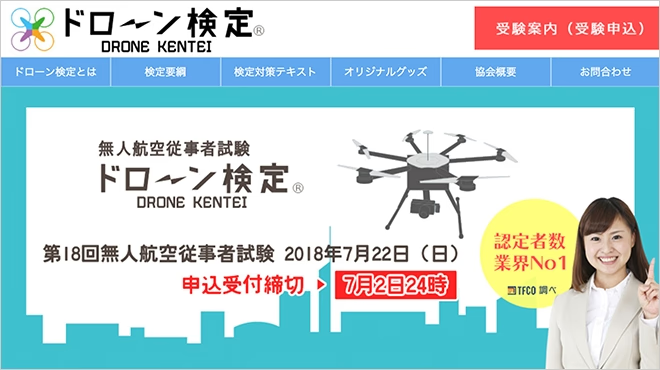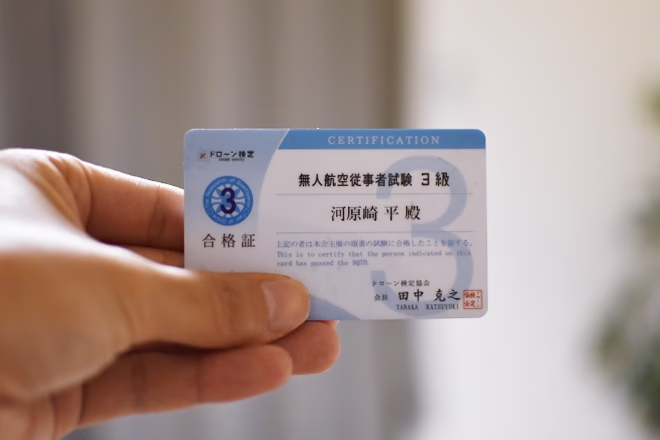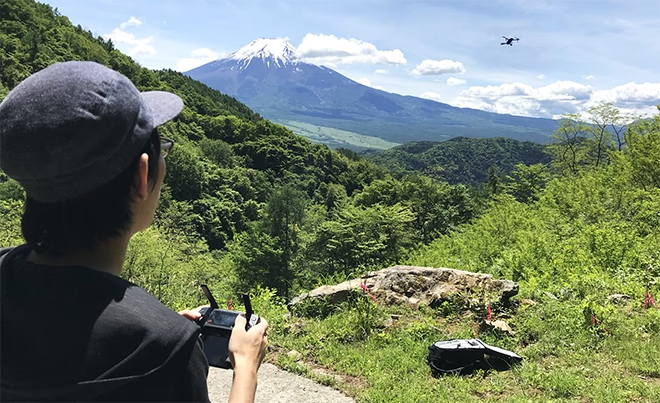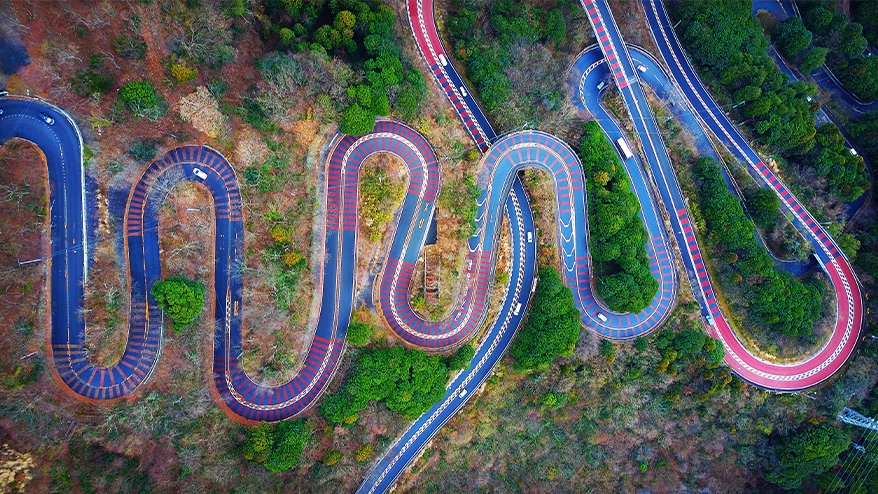こんにちは、デザイン部の河原崎です。
去年、ドローンの魅力にどっぷりハマり記事を執筆させていただきましたが、嬉しいことに社内外から多くの反響をいただくことができました。
ドローンの記事、まだまだ需要があると確信できたので、前回収まりきれなかった内容と熱い想いを、今回はPart2としてお伝えします!
6月にドローンで撮影した、モノサスのサテライトオフィスがある周防大島のPR動画。BGMは元バンドマンで同僚の濱端に制作してもらいました。
ドローンついてQ&A
前回のドローンの記事公開後、友人知人からドローンについて何かと相談を受けるようになりました。
その中でも、特によく聞かれた質問を、記したいと思います。
Q1. どこで飛ばせるの?
A. 無人航空機の飛行ルールに準拠した場所で!
国内では、国土交通省が定める「無人航空機の飛行ルール」が2015年12月に新たに施行されました。重量200g以上のドローンを下図のような場所で飛ばす場合は、事前に国土交通省の許可が必要となります。
(200g以下の小さいドローンは「無人航空機」に当てはまらないため、下図のような場所でも飛ばすことは可能です。)

上記のCにあたる「人口集中地区の上空」については、DJI(ドローンを販売・開発している企業)のサイト内でも、確認することができます。
上記のA.B.C以外は飛ばせるとなると、結構どこでも飛ばせそうですが、都内はほぼ「人工集中地区」に当てはまるため、残念ながら許可無しで飛ばせる場所は少ないのです。
(ちなみに「室内」は、人工集中地区であろうと飛ばすことが可能な為、都内では室内練習場がいくつかあります。)
さらに、ドローンを以下の状況で飛行させる場合は、場所に関わらず地方航空局長の承認が必要になります。
- 日中(日出から日没まで)に飛行させること
- 目視(直接肉眼による)範囲内で無人航空機とその周囲を常時監視し飛行させること
- 人(第三者)又は物件(第三者の建物、自動車など)との間に30m以上の距離を保って飛行させること
- 祭礼、縁日など多数の人が集まる催しの上空で飛行させないこと
- 爆発物など危険物を輸送しないこと
- 無人航空機から物を投下しないこと
このようにドローンの飛行制限は調べてみると様々ありますが、一度ルールを覚えれば、そんなに難しいものではありません。
個人的には、都内でも気軽に飛ばせる場所が増えてほしいものです。
Q2. 免許って必要なの?
A. ドローンに免許はありません!!
ドローンは、車のように操作(操縦)して機体を動かすので、免許が必要と思いがち。
しかし、ドローンに免許は必要ないのです。…というより(現時点では)免許が存在しません。なので、実は買った当日から飛ばすことが可能です。
しかし買った直後は、操作方法や飛行ルールを知らないことで危険と不安が伴うもの。
そこで、免許の変わりというわけではないですが、「ドローン検定」なるものが存在します。

実際に私も2017年に、3級のテストを受けてきました。
基本的には筆記試験のみとなり、無人航空機(ドローン)の機体特性や基礎技術、無線、さらには高校で勉強した以来の物理の問題まで出題。
久しぶりの試験勉強でちょっと不安もありましたが、
販売されている教本を参考に、一夜漬けの頑張りが実って無事合格。

ドローン検定3級に受かった際の合格証。
合格証自体にはそこまで効力は無いですが、勉強した事できちんとした飛行ルールを学べたことは、自身でドローンを飛ばす際の安心感につながりました。
こういった試験を受けることで、知識を自主的に養うのも良いでしょう。
Q3. そもそもどうやって飛ばすの?
A. ドローン専用のプロポ(送信機)にiPad(iPhone)を接続して操縦します。
いまは発売されているドローンのほとんどは、プロポ(送信機)を使って操縦します。
私の使っている機体 Mavic pro は、プロポに iPad を接続し、連動された専用アプリでリアルタイムで飛んでいる画面を見ながら操縦をしてます。

山梨県に富士山を撮影に行ったときの一コマ。手に持って操縦しているのがプロポ(送信機)。
以前は iphone を接続して飛ばしていましたが、画面が小さいと撮影中のピンボケに気づかない事があり、後日 PC でプレビューしたときに泣かせられる事もしばしば。
なので、なるべくモニターの大きい iPad がオススメです。
空撮の新たな表現手法
ここ数年でドローンの需要は高まり、テレビや Web サイトで空撮を目にする機会も一気に増えてきました。
人は見慣れてくると、ただの空撮映像ではインパクトが得られなくなってきます。
そんな中、各国のクリエイターたちは、日々、斬新な手法で撮影しています。
ここでは、ドローンをただ飛ばすだけではない、ドローンを使った次世代の表現方法や撮影アイデアをご紹介します。
VR × ドローン
360°カメラを使ってVR撮影した空撮映像。
PCで閲覧の方は、動画上でマウスをドラッグしながらグリグリと動かしてみてください。ドローンでの空撮をVR撮影することで、より魅力的な風景を映し出しています。
(VR用のゴーグルがある方は装着してご覧ください。)
マイクロ × ドローン
名古屋の制作会社が撮影した、マイクロドローンを使ったプロモーション映像。
手のひらに収まる程の超小型ドローンで、建物や人物のギリッギリを通って飛ばす事で、映画のようにダイナミックな映像が撮影可能になります。
ドローンを飛ばしたことがある人ならわかると思いますが、被写体ギリギリを操縦するのはとても難しく、操縦技術が超必要とされる映像です。
ノーカット一発撮りというのがまたスゴい…!
タイムラプス × ドローン
空撮にタイムラプス(早回し)を取り入れた映像。
夜に走る車のライトがとても幻想的に映り、空撮映像のアクセントとなっています。
Web サイトのメインビジュアルで大きく使うと、よりエモーショナルな表現でサイトを引き立たせることができそうです。
ドローンビギナーpart2、いかがでしたでしょうか。
日々ドローンは進化を遂げていて、金額的にも操縦技術的にも、一般の方の敷居が低くくなってきています。
私は去年の4月にドローンを買いましたが、今では更に性能がよく安価なドローンが発売されています。
いつか自分で撮影したドローン映像を、メインビジュアルでババーンと使ったWebサイトを作りたいなーと思う今日この頃です。(撮影依頼お待ちしてます!)
去年の末に撮影した箱根の曲道。

